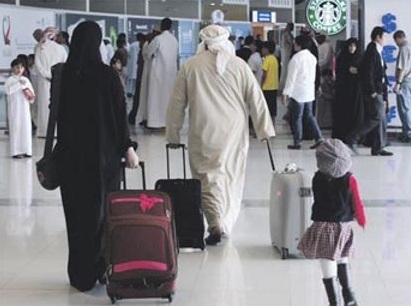
The ‘Global Economic Impact of Muslim Tourism and Future Growth Projection: 2017-2020’ report is released on Tuesday, Nov. 6 at World Travel Market London.
The report says that the GDP impact of the global Muslim travel sector is projected to reach $183 billion by 2020, up from $148 billion in 2017. The US has the highest GDP impact from Muslim travel for an individual country, expected to reach $21.4 billion by 2020. The Middle East comes in second place, with a projected $18 billion, while Asia is rapidly closing the gap with Europe, at $12.6 billion and $13.3 billion respectively.
Inbound Muslim travelers spent an estimated $127 billion in 2017, which is forecast to rise to at least $157 billion by 2020.
Total global outbound Muslim tourism expenditure is projected to develop at a similar rate to inbound spend, from $101 billion in 2017 to $122 billion by 2020.
The Middle East is by far the largest source market worldwide in this respect, contributing $62.2 billion in 2017 and forecast to rise to $72 billion in 2020, with a 59% market share. Travelers from Saudi Arabia and the UAE are the biggest spenders, with their share of the global total predicted to reach a staggering 41% by the end of the decade.
Salam Standard’s report also highlights the total tax impact worldwide of Muslim travel, which grew from $18.6 billion in 2016 to $19.5 billion in 2017 and is predicted to reach $24 billion by 2020.
Once again, the US and EU are the chief beneficiaries and are collectively set to receive $16.4 billion in taxes by 2020, almost two-thirds of the global total. Other countries with a notable tax impact from Muslim tourism are China at $1.1 billion and Thailand at $1 billion.
“The report findings are clear; the Muslim travel industry is a major contributor to tourism GDP for Muslim and non-Muslim countries around the globe, generating significant economic wealth, tax income and employment opportunities,” said Faeez Fadhlillah, Co-Founder and CEO of Salam Standard and Muslim-friendly hotel booking portal, Tripfez.
“With the sector forecast to continue its strong growth trajectory, driven by Asia and the Middle East where young and aspirational populations and an increasingly-affluent middle class are hungry to travel the world in a faith-compatible way, savvy destinations and travel companies around the world can capitalize on this market’s untapped potential.”
The report provides travel industry stakeholders, including airlines, airports, hotels, travel start-ups, technology firms, tourism boards, Destination Management Companies, and Online Travel Agencies (OTAs), with advice on how to best cater and market to the global Muslim travel community.
It highlights the opportunities for non-Muslim destinations, providing examples of countries who have benefited from ‘halal tourism’ strategies targeting Muslim travelers.
In Australia, for example, inbound Muslim travel is expected to contribute 10.3% of total tourism GDP by 2020, while in Singapore and Thailand, the contributions are forecast at 16.5% and 9.5% respectively.
“One in three people worldwide will identify as Muslim by 2060 and to disregard this trend would be foolhardy,” said Fadhlillah.
“With the Muslim population growth at 70% compared to the global average of 32%, the Muslim travel market presents many untapped opportunities for countries and organizations that successfully address its needs - and an enormous threat for those who ignore it.”